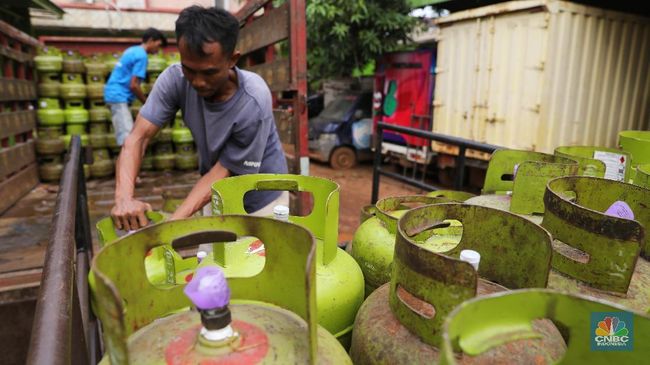RI Wasteful in Importing LPG & Failing to Give Subsidies, This is the Solution

Jakarta, CNBC Indonesia – Imports of Liquified Petroleum Gas (LPG), which continue to increase in line with increasing domestic energy demand, have urged the government to think of alternative solutions to overcome this national energy security problem.
At a time when the demand for LPG is increasing at a rapid rate compounding (CAGR) of 10% per year from 2009-2019, domestic production has even been stagnant and has even tended to decline at a rate of 0.78% (CAGR) per year at the same time.
As a result, the import taps had to be opened wide and the increase was recorded at more than 19% (CAGR) in the last 10 year period.
The Ministry of Energy & Mineral Resources (ESDM) noted that the national LPG consumption in 2019 reached 7.76 million tons, while production was stuck at 1.96 million tons. A total of 5.71 million tons of LPG must be imported from abroad.
If this condition continues, the dependency ratio of Indonesia’s LPG imports for 2024 will be 83.5% from this year’s 77.6%. The Ministry of Energy and Mineral Resources projects that in 2024 the national demand for LPG will reach 11.98 million tons while imports will reach 10.01 million tons.
The flowing import taps certainly make the Indonesian oil and gas trade balance record a deficit every year. To make matters worse, the deficit swelled and made the current account come up short. As a result, the rupiah exchange rate is always a victim because it depreciates against the US dollar.
Another problem that arises related to the high demand for national LPG is that subsidies are also increasing. Every year tens of trillions are budgeted from the state budget to provide LPG subsidies to 57 million households in need.
The LPG subsidy from the APBN in 2015 was recorded at Rp. 25.87 trillion and continues to increase almost twofold to Rp. 50 trillion this year based on government estimates.
The high import of LPG due to a wide gap between consumption and production must actually be overcome by encouraging increased production on the upstream oil and gas side and expansion of refinery capacity on the downstream side. So that imports of oil and oil products can be simultaneously suppressed.
The problem currently occurring in the field is that the trend of oil and gas lifting tends to decline due to aging wells. For information, oil lifting up to September alone was recorded at only 706 thousand barrels per day (bpd).
On the other hand, the slow pace of exploration activities also causes the national oil reserves to experience depletion over time. This chronic problem is compounded by the fact that refinery capacity is only at 1 million barrels per day (bpd).
Boosting oil and gas production in the upstream sector and increasing the capacity of legal refineries are fardhu ‘ain alias is mandatory. 90% of LPG is used as cooking fuel and 70% of it is imported, is a downstream product from oil and gas with the main composition being propane and butane which have a short carbon chain.
Apart from increasing oil and gas production as well as refinery expansion through rejuvenation and construction of new refineries, efforts to reduce dependence on LPG imports can be done with a diversification strategy.
One of the fuel diversification strategies currently being pursued by the government is coal gasification. As the name suggests, coal, which has abundant sources in the country, will be converted into gas. In this case, dimethyl ether (DME) will substitute for LPG.
.
Original Source
